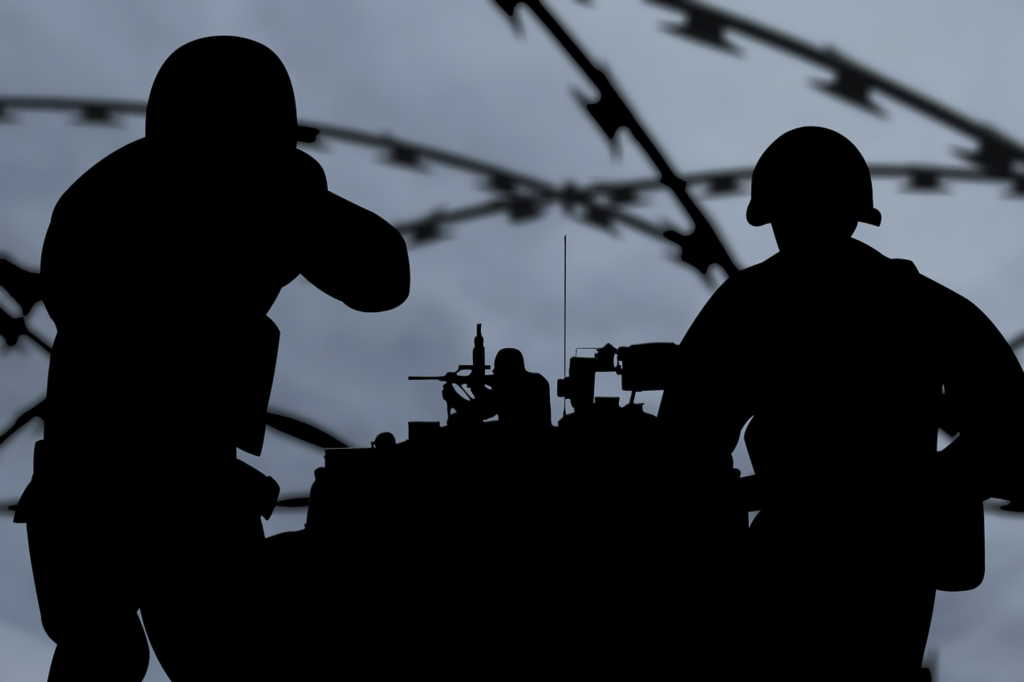
The terminology “New Types of Warfare” has pulled the elements of combat into the broadest sense of war, which covers all the aspects that can be engaged in a war or crisis situation including propaganda and hacking. Emerging wars aim to destroy the state structure that involves the attack on the population to change the behavior of the state by disrupting state machinery. These wars are different from a traditional war that involves direct attacks by engaging two armies, but these modern and non-traditional wars are state-centric and being directly waged on population and industrial centers by the adversary state. Population-centric attacks involve different techniques including cyber-attacks, propaganda, insurgencies and proxy attacks. The stability of a region would be at risk when even a single event that caused disturbance occurs-whether it is conventional or unconventional.
The US Department of Defense has defined all warfare as traditional and irregular but evolving characteristics of war into non-traditional warfare may change its definition. The Irregular Warfare Joint Operating Concept of 2008 defines, “irregular warfare as a complex, messy and ambiguous social phenomenon that does not lend itself to clean, neat, concise or precise definition”. Similarly, in February 2009 Gen Mattis stated that US military is superior to our enemies in both nuclear and conventional warfare capabilities, we’re not yet superior in irregular warfare”. The US military Doctrine has identified the five pillars of irregular warfare which can be categorized as its characteristics as well because irregular warfare is based on these five pillars. That includes Counter-terrorism, unconventional warfare, foreign internal defense, counterinsurgency, stability operations.
The term “irregular warfare” was first used by NATO but later it was replaced by hybrid warfare. Hybrid warfare involves irregular warfare techniques and attacks, but one should not be confused with irregular warfare and hybrid warfare nor they can be replaced. Hybrid warfare is the combined concept of conventional, cyber, and irregular warfare to achieve political objectives by using irregular methods like diplomacy, interventions, and fake news. Whereas irregular warfare is a violent-based struggle by state and non-state actors to influence a population to build legitimacy. War fighting by non-state actors also includes the terrorist organization e.g., ISIS etc. In irregular wars states are sponsoring non-state actors to conduct attacks over the adversary e.g., Indian Security Advisor-Ajit Doval once admitted that India sponsors Taliban to conduct attacks in Pakistan. Most often, terrorism and insurgency are considered similar but terrorism involves the random killing of citizens whereas insurgency involves the guerilla attacks by non-state actors.
Irregular warfare involves conventional, unconventional and offensive techniques based on indirect and asymmetric approaches by using the full range of military and other capabilities to destroy the enemy’s power. Irregular warfare consists of a variety of operations that are different from traditional warfare using the indirect means to attack adversary on different points including population.
“Understanding your adversary’s options and strategies is a fundamental requirement to confront that adversary”- Sun Tzu. To know the adversary’s strategic goals while formulating a good plan would help to take advantage of his weaknesses. RAND Corporation has identified 3 key aspects that all adversaries use, and these could be used for countering enemy attacks as well – functions, processes and resources on which they rely to maneuver and endure. Functions are his capabilities, Processes are the series of actions and Resources are the requirements that could be in form of a person or organization.
While understanding the irregular wars in the context of South Asia, it is clear that one of the main causes of south Asian instability is caused by irregular wars in the form of insurgency, terrorist attacks and indirect attacks. Terrorism was rooted in the South Asian region and the whole region is bearing the cost of it. In the South Asian region India and Pakistan are two magnet polls that attract the attention of the world towards the region and both are responsible for the strategic stability of the region. The stability of the whole region is dependent upon Indio-Pak relations. Their historical rivalry pushes the region into instability. After the nuclearization of both states, nuclear deterrence had played an effective role to de-escalate the tension between India and Pakistan. Whenever a military crisis occurred and tension increased, it was quickly resolved due to the presence of nuclear weapons and in some of the cases; the international community had also played its role. The presence of nuclear weapons in the two neighboring enemy states creates Stability-Instability Paradox in the region.
But the evolving characteristics of warfare into non-traditional and unconventional warfare have changed the dynamics of regional stability which involves indirect attacks by using unconventional and conventional tools such as Uri surgical attacks-2016, Pulwama attack-2019, Abrogation of article 370 and Balakot crisis. Terrorist activities in Baluchistan, Sindh and Gilgit Baltistan also come under the umbrella of irregular attacks. These attacks only aim to disturb the stability and structure of the enemy states and to change the behavior of the public which leads to the instability of the whole region. In the context of regional stability, the Pakistani military has conducted several military operations to counter-terrorism in the region but the rivalry between India and Pakistan is the biggest question mark on the South Asian strategic stability. On a whole South Asian region, the threat can be countered or reduced but the historical rivalry between India and Pakistan cannot be countered and the way both countries are conducting irregular attacks by using conventional and unconventional tools cannot be countered. Especially non-traditional threats are not only difficult to counter but also hard to identify. The most important of today’s hybrid war is being fought between both countries.
The strategic stability of the region once again is at risk due to the emerging technologies, irregular and non-traditional warfare techniques. In past years, nuclear weapons played a very important role to maintain the stability of the South Asian region. Nuclear deterrence can help to de-escalate the tension between two nuclear-weapon states but it is not an ultimate option to resolve all the conflicts. Whereas these modern warfare are being considered as a challenge to deterrence stability and nuclear stability. These irregular threats may be countered by using the RAND Corporation’s identified Functions, Processes and Resources, but these are applicable when one identifies its enemy first.




Be the first to comment